The enthalpy change in the reaction: N2O (g) + NO2 (g) ⇄3 NO (g)is +115.7 kJ / mol. Will the direction of the equilibrium shift LEFT, RIGHT, or STAY THE SAME when the following stresses are applied to the system?(12a): Removing nitrogen dioxide gas(12b): Adding dinitrogen monoxide gas(12c): Adding nitrogen monoxide gas(12d): Decreasing the volume of the system(12e): Increasing the temperature
The enthalpy change in the reaction: N2O (g) + NO2 (g) ⇄3 NO (g)is +115.7 kJ / mol. Will the direction of the equilibrium shift LEFT, RIGHT, or STAY THE SAME when the following stresses are applied to the system?(12a): Removing nitrogen dioxide gas(12b): Adding dinitrogen monoxide gas(12c): Adding nitrogen monoxide gas(12d): Decreasing the volume of the system(12e): Increasing the temperature
Chemistry & Chemical Reactivity
10th Edition
ISBN:9781337399074
Author:John C. Kotz, Paul M. Treichel, John Townsend, David Treichel
Publisher:John C. Kotz, Paul M. Treichel, John Townsend, David Treichel
Chapter15: Principles Of Chemical Reactivity: Equilibria
Section: Chapter Questions
Problem 28PS: Kp for the following reaction is 0.16 at 25 C: 2 NOBr(g) 2 NO(g) + Br2(g) The enthalpy change for...
Related questions
Question
The enthalpy change in the reaction: N2O (g) + NO2 (g) ⇄3 NO (g)
is +115.7 kJ / mol. Will the direction of the equilibrium shift LEFT, RIGHT, or STAY THE SAME when the following stresses are applied to the system?
(12a): Removing nitrogen dioxide gas
(12b): Adding dinitrogen monoxide gas
(12c): Adding nitrogen monoxide gas
(12d): Decreasing the volume of the system
(12e): Increasing the temperature
Expert Solution
This question has been solved!
Explore an expertly crafted, step-by-step solution for a thorough understanding of key concepts.
This is a popular solution!
Trending now
This is a popular solution!
Step by step
Solved in 8 steps

Knowledge Booster
Learn more about
Need a deep-dive on the concept behind this application? Look no further. Learn more about this topic, chemistry and related others by exploring similar questions and additional content below.Recommended textbooks for you
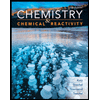
Chemistry & Chemical Reactivity
Chemistry
ISBN:
9781337399074
Author:
John C. Kotz, Paul M. Treichel, John Townsend, David Treichel
Publisher:
Cengage Learning
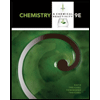
Chemistry & Chemical Reactivity
Chemistry
ISBN:
9781133949640
Author:
John C. Kotz, Paul M. Treichel, John Townsend, David Treichel
Publisher:
Cengage Learning
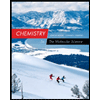
Chemistry: The Molecular Science
Chemistry
ISBN:
9781285199047
Author:
John W. Moore, Conrad L. Stanitski
Publisher:
Cengage Learning

Chemistry & Chemical Reactivity
Chemistry
ISBN:
9781337399074
Author:
John C. Kotz, Paul M. Treichel, John Townsend, David Treichel
Publisher:
Cengage Learning

Chemistry & Chemical Reactivity
Chemistry
ISBN:
9781133949640
Author:
John C. Kotz, Paul M. Treichel, John Townsend, David Treichel
Publisher:
Cengage Learning

Chemistry: The Molecular Science
Chemistry
ISBN:
9781285199047
Author:
John W. Moore, Conrad L. Stanitski
Publisher:
Cengage Learning

Chemistry: Principles and Reactions
Chemistry
ISBN:
9781305079373
Author:
William L. Masterton, Cecile N. Hurley
Publisher:
Cengage Learning
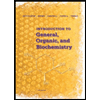
Introduction to General, Organic and Biochemistry
Chemistry
ISBN:
9781285869759
Author:
Frederick A. Bettelheim, William H. Brown, Mary K. Campbell, Shawn O. Farrell, Omar Torres
Publisher:
Cengage Learning
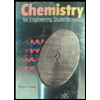
Chemistry for Engineering Students
Chemistry
ISBN:
9781337398909
Author:
Lawrence S. Brown, Tom Holme
Publisher:
Cengage Learning